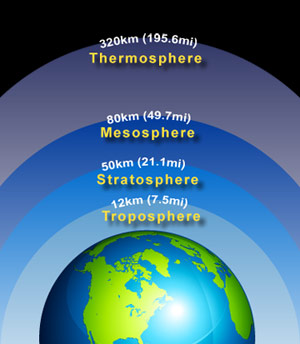Reduced Local Air Temperature
Large and densely populated areas often experience higher temperatures, greater pollution, and more negative health impacts during hot summer months, when compared to more rural communities. This phenomenon is known as the urban heat island. Heat islands are created by a combination of heat-absorptive surfaces (such as dark pavement and roofing), heat-generating activities (such as engines and generators), and the absence of vegetation (which provides evaporative cooling). Heat islands can intensify extreme hot weather, which can cause breathing problems, heat cramps, and heat stroke, and may lead to illness or even death—especially in vulnerable populations such as the elderly.
Extreme heat interventions such as providing shade, promoting cool roofs and pavements, and public education reduce the harm of extreme heat on our communities. Citywide installation of cool roofs can actually lower the average city surface temperature and cool the outside air! Not only will the city feel more comfortable in the summer, we’ll be saving cooling energy.
For example, a program to install cool roofs, cool pavements, and trees over 30% of the surface of the Los Angeles basin has been predicted to lower the outside air temperature by about 5°F (3°C). Additional annual building energy savings expected from the cooler outside air are estimated to be about half those resulting from the cool roof itself. Read more in this Practical Guide to Cool Roofs and Cool Pavements.
Public Health Benefits
Cool roofs reduce the heat transfer into a building, which means ceilings under cool roofs are cooler, and your rooms are as well. During hot summers, cooler is more comfortable. For those homes without air conditioning, cool roofs can provide an important public health benefit during heat waves.
In Philadelphia, a program added cool roofs and insulation to residential buildings that lack air conditioning to help curb heat-related illnesses and deaths. They found that installing cool roofs lowered the daily maximum ceiling surface temperature by about 4.7°F (2.6°C), while daily maximum room temperature dropped by about 2.4°F (1.3°C). On a 95°F (35°C) day, these types of reductions represent large reductions in heat gain to the room and significantly improve perceived human comfort (Source: U.S. Environmental Protection Agency, Reducing Urban Heat Islands).
California's Departmnet of Community Services and Development has a similar program, called the Weatherization Assistance Program.
Improved Air Quality
Reducing energy use in your home or office directly reduces air pollution from power-plant emissions. Reduced energy demand leads to reduced burning of fossil fuels, so in this way, cool roofs contribute to fewer emissions of air pollutants, such as carbon dioxide (CO2).
Higher temperatures increase the formation of smog in the air, making it dangerous to be outside. Cooling the outside air with cool roofs can slow the formation of smog. Decreasing the outside air temperature in the Los Angeles basin by 5°F (3°C) is predicted to reduce smog by about 10%, worth about $300M/yr (based on 1996 dollar value) in avoided emissions of smog precursors (e.g., NOx) (Source: Global Cool Cities Alliance, A Practical Guide to Cool Roofs and Cool Pavements)
 Smog formation increases as afternoon temperatures rise in Los Angeles, CA |
Increased Global Cooling
Extreme heat will impact every community in California and is a public health, climate resilience, and social equity problem. Climate change is causing more frequent and severe consecutive, unusually hot days and nights – known as extreme heat events.
Cool roofs not only cool your home, they cool the world! Cool roofs increase the earth’s reflectivity (known as its albedo), which in turn cools the planet. In addition to reduce the amount of energy used to keep a building cool, replacing a hot roof with a cool roof immediately reduces the flow of radiant heat from the earth into the troposphere, the layer of the atmosphere in which we live.
Substituting 1000 ft2 (93 m2) of cool white roofing for standard gray roofing provides a one-time offset of about 10 metric tons of CO2, worth $250 (at a price of $25 per ton of CO2). Similarly, substituting 1000 ft2 (93 m2) of cool color roofing for standard color roofing provides a one-time offset of about 5 metric tons of CO2, worth $125. While the roof must be kept cool to retain this benefit, the offsets are based on aged, rather than initial values of solar reflectance.

Layers of atmosphere
